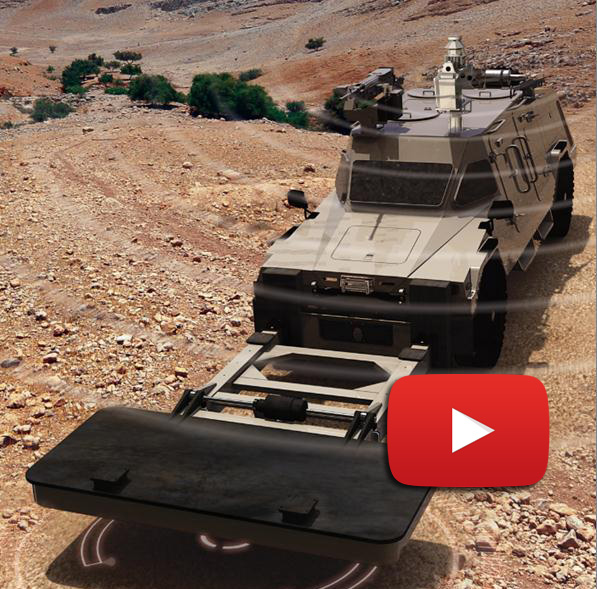
CIMS, developed by two IAI subsidiaries – ELTA and RAMTA, is comprised of an integrated suite of sensors, processing and decision support tools designed to simplify and assist the combat engineers’ tasks in combat environment. IAI will unveil the CIMS at the 2014 Annual Association of the United States Army (AUSA) Meeting & Exposition in Washington DC next week.
The CIMS suite designated ELI-3375 detects both surface and underground IEDs, mines, and roadside bombs, and consists of an ADS – Above-surface Detection System, and MIDS – underground Mine and IED Detection System. The ADS includes a groundbreaking side-looking SAR radar, high-resolution optical detection system and an infrared multispectral investigation system. MIDS comprises a Ground Penetrating Radar (GPR) and a magnetic detector. The system also performs automatic cueing of sensors and complimentary countermeasure systems, including IED neutralisation as well as hard kill, to autonomously defeat or destroy suspected IEDs from a distance.
“Our combination of unique sensors allows a simple and highly effective mine and IED detection system to be provided to forward forces. We see huge potential for this system and consider it to be a groundbreaking solution.”
The system architecture addresses different threat types with multiple means of detection – thus increasing the probability of detection while reducing false alarm rate. For example, CIMS would seek and detect roadside IED threats using a combination of GigaPix Optical Detection System GPODS – electro-optical sensors, and Surface IED Detection Radar (SIDER), a ground-mobile synthetic aperture radar (SAR) staring in front and to the sides of the vehicle. SIDER utilises a derivative of the ELM-2112 persistent ground surveillance radar family. Using SAR processing, the radar and cameras are covering a sector of 270 degrees around the CIMS vehicle, enabling the operators to detect threats at significant on both sides of the travelling path.
The GPODS camera array is sensitive enough to spot IEDs by their distinctive shape, while the radar can detect IEDs hidden under camouflage. In addition, a medium wave infrared provides a multispectral IED investigator adding further analysis to follow threat detection and identification. Additional sensors such as infrared cameras and laser imaging radar will also be available to augment the CIMS sensor suite.
Ground penetrating sensors, such as magnetic anomaly detection system developed as part of RAMTA’s collaboration with the Ben Gurion University, and ground penetrating radar are also used to detect buried IEDs and mines, using advanced unified detection logic that combines metal detection and GPR. The combination of the two systems enable CIMS to detect magnetic and non magnetic mines and IEDs buried at tactical relevant depth, including those hidden at culverts or under bridges.
Integration of the sensor suite through the Combat Engineering Mission Management System (CEM2S) that combines the processing of inputs from the different sensors through central processing and management, delivering accurate information presented in standard NATO symbology offering the operators simplified, real-time mapping of potential IED threats. The CIMS suite and its subsystems can be adapted to any combat tactical vehicle – either manned or unmanned.




















